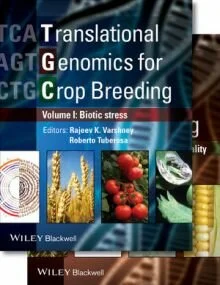Passito wine, generic name for Italian sweet wine, is made from dried grapes using ancient, traditional, and artisan winemaking techniques differing between regions. In North-East Italy winemakers use mouldy grapes to produce their very sweet wines. During the drying process and the wine grapes are infected by the grey fungus, Botrytis cinerea, which is under favourable conditions known in the wine industry as the ‘Noble Rot’. As a consequence of the mould infection, the juice in these grapes becomes increasingly sweet as they dehydrate. The juice from the raisinated grapes is subsequently fermented by yeast (e.g. Saccharomyces cerevisiae) in cellars during winter.
Unfortunately, the mould used for grape drying and the yeasts required for fermentation in passito wine making are still difficult to control by the winemakers. In traditional passito wine production which starts in Autumn without artificial environmental conditioning, the incidence of noble rot on slowly dehydrating grapes, is extremely variable and heavily dependant on weather conditions. The subsequent alcoholic fermentation is also a very delicate production step, because yeast activity is seriously hindered by the high sugar concentrations of the extra sweet grape juice as well as the low cellar temperatures in winter. A group of Italian microbiologists from the University of Verona therefore developed a novel protocol for the selection and characterization of indigenous moulds and yeasts to use as possible starter cultures in the production of passito style wines. The procedure consisted of several phases. First, the isolation of both moulds and yeasts from naturally withered grapes. The found Botrytis cinera and Saccharomyces cerevisiae strains were identified and typed, their performance evaluated with physiological and technological tests. Last but not least, the effect the selected fungi cultures have on the aroma profile of the wines was carefully examined. This protocol can help to improve the taste and quality reproducibility of the sweet Italian passito wines .As such, Azzonlini et al. provide a tool that enable winemakers to meet the delicate requirements of special wines by introducing modern technology and thus enhance the wines quality. /by FB Frédérique Belliard
Azzonlini et al. (2013), Selection of Botrytis cinerea and Saccharomyces cerevisiae strains for the improvement and valorization of Italian passito style wines. FEMS Yeast Research 13, 540-552
http://onlinelibrary.wiley.com/doi/10.1111/1567-1364.12054/abstract
 A relatively “easy” way of treating hypertension is a change in diet. This is due to, in part, the bioactive peptides with antihypertensive activity in various food proteins that are released during digestion. In this context, Arg-Phe (RF) is the molecule with the most potent vasorelaxing effect to date. Dr. Kousaku Hinata and colleagues from the Graduate School of Agriculture at the Kyoto University investigated whether there were more peptides containing the RF sequence with similar features. In their study published in the journal Molecular Nutrition and Food Research the team focused on protease hydrolysate of rice glutelin and discovered a new tetrapeptide: Ile-His-Arg-Phe (IHRF). In further experiments with spontaneous hypertensive rats the group demonstrated that IHRF is even more potent and persisted longer after oral administration than RF. To understand the mechanism of the antihypertensive activity of IHRF and to get to know more of the peptide’s features read the article online. / Maresa Groten
A relatively “easy” way of treating hypertension is a change in diet. This is due to, in part, the bioactive peptides with antihypertensive activity in various food proteins that are released during digestion. In this context, Arg-Phe (RF) is the molecule with the most potent vasorelaxing effect to date. Dr. Kousaku Hinata and colleagues from the Graduate School of Agriculture at the Kyoto University investigated whether there were more peptides containing the RF sequence with similar features. In their study published in the journal Molecular Nutrition and Food Research the team focused on protease hydrolysate of rice glutelin and discovered a new tetrapeptide: Ile-His-Arg-Phe (IHRF). In further experiments with spontaneous hypertensive rats the group demonstrated that IHRF is even more potent and persisted longer after oral administration than RF. To understand the mechanism of the antihypertensive activity of IHRF and to get to know more of the peptide’s features read the article online. / Maresa Groten


